Israel and Hamas: What's happening?
- Published
- comments
What is life like for children in Israel and Gaza?
On 17 December, humanitarian aid entered Gaza directly from Israel for the first time since fighting broke out.
Deliveries via the Kerem Shalom crossing, which borders Gaza, are hoped to increase the amount of food and medicine reaching civilians in Gaza.
The opening of the crossing comes as the level of food and supplies in Gaza runs very low, with increasing pressure from nations around the world for another ceasefire to be agreed.
A first temporary pause in fighting, between Israel and Hamas, that began on Friday 24 November, lasted for seven days before fighting started again.
The seven-day pause, or truce, was part of a deal between the two sides which saw some hostages taken by Hamas from Israel, and some Palestinians being held in Israeli jails - being released.
A hostage is someone who has been taken by a group or a person to try to force another group or person into doing what they want.
The truce was originally set to last for four days and was extended twice.
It saw the release of 110 hostages held by Hamas and 240 Palestinian prisoners held by Israel.
The BBC has been told talks are taking place to reach an agreement between the two sides, even as the fighting continues.
What happened?
On 7 October 2023, dozens of armed fighters from a Palestinian armed group called Hamas crossed into Israel from Gaza in a surprise attack.
Many Israelis were killed, and more were injured. The attacks by Hamas targeted civilians as well as soldiers and thousands of rockets were also launched by Hamas towards Israel.
Israel responded with air strikes into Gaza, saying it was targeting Hamas. Many Palestinians in Gaza have been killed or injured in the airstrikes.
Israel then began a ground war in Gaza, with soldiers fighting inside the territory.
Charities and world leaders have called for children to be kept safe while fighting is ongoing between Palestinian armed groups and Israel.
Although Hamas and Israel have been enemies for many years, this has been the largest outbreak of violence in decades.
Israel Gaza: The UK children with family in Israel and Gaza
What is the latest?
A truce - an agreement from both sides to pause fighting - that began on 24 November is now over and fighting is once again continuing between Israel and Hamas in Gaza.
The Israeli military now says it has moved its forces into southern Gaza.
Israel said Hamas broke the rules of the deal by firing rockets at Israel, according to the Israel Defence Forces. Hamas blamed Israel for breaking the ceasefire agreement, saying it had prevented fuel supplies from reaching the north of Gaza.
When Hamas crossed into Israel on 7 October, they took around 240 people back to Gaza with them as hostages. Israel has been demanding their safe return ever since.
During the seven-day pause in fighting, Hamas released some of the Israeli hostages taken to Gaza from Israel during the attack on 7 October.
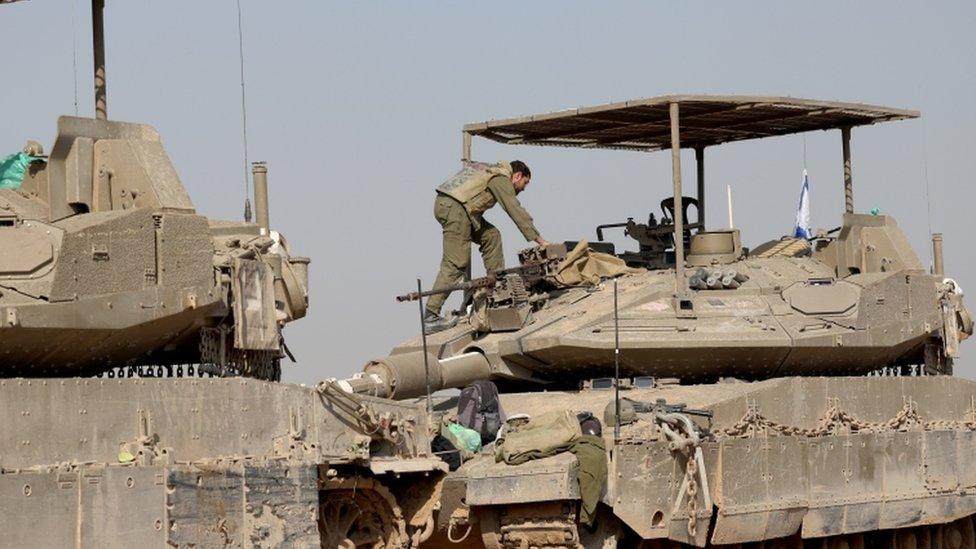
The Israeli military says it has moved its forces into southern Gaza.
The release of those hostages was part of a deal between the two sides which also saw some Palestinian detainees - people being held in Israeli jails - released.
The truce also allowed more aid to get into Gaza to help the people who live there - lorries carrying medical supplies, fuel and food arrived from Egypt.
The children's charity Unicef says that the aid that had been delivered during that period had been vital but was not nearly enough.
On 17 December, UN humanitarian aid entered Gaza directly from Israel for the first time since fighting broke out. Deliveries via the Kerem Shalom crossing which borders Gaza are intended to increase the amount of food and medicine reaching civilians.
The opening of the crossing comes as the level of food and supplies in Gaza runs very low, with footage showing crowds boarding aid trucks and racing to grab supplies.
What's been happening in Gaza up to now?

Some Palestinians who fled their houses are getting help in United Nations-run centres but charities are warning they need more aid
The United Nations (UN) has been calling for civilians - people who are not fighting - in both Israel and Gaza to be protected.
Over the past few weeks, hundreds of thousands of people living in northern Gaza have left their homes following an order from the Israeli military to evacuate the region, but many civilians remain.
The majority of those who have left, are urgently seeking shelter and food.
Some people have been allowed to leave Gaza and enter neighbouring Egypt.
The Rafah border crossing between Gaza and Egypt was opened for ambulances on 1 November, carrying badly injured people from Gaza to Egypt, and a limited number of civilians with dual nationality were also allowed through the crossing into Egypt.
After the ceasefire ended on Friday 1st December, the Israeli military dropped leaflets, warning people living in areas in the south of Gaza to leave their homes in order to keep safe as the fighting continued.
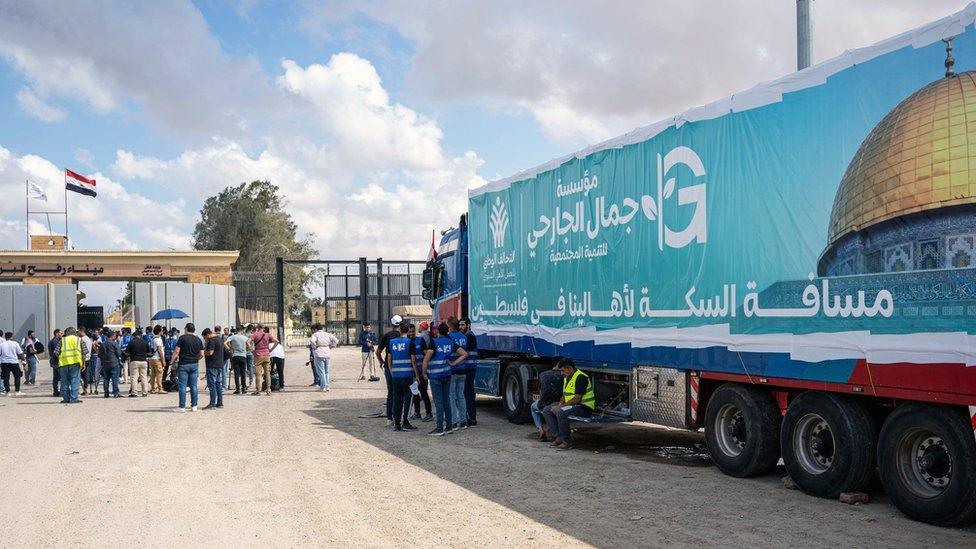
A deal was agreed to let some trucks carry aid into Gaza through the Rafah crossing - but charities say the number is far from enough. If the new deal goes ahead, trucks will be able to enter Gaza with more aid during the four-day fighting pause.
What is Israel?
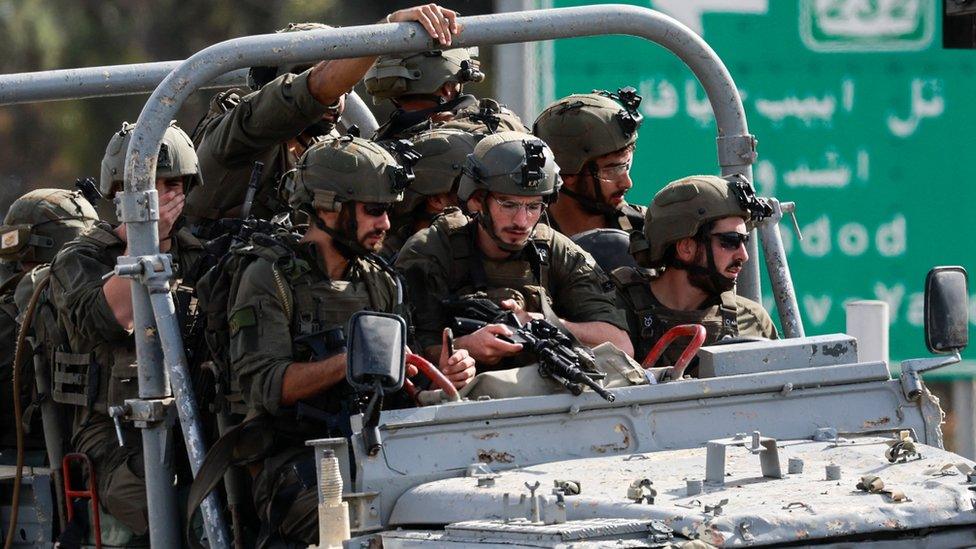
Israeli military drive on a road in southern Israel, as rockets are launched from the Gaza Strip
Israel is a country in the Middle East, with a coastline on the Mediterranean Sea. It was created in 1948, following World War Two and the Holocaust, as a homeland for Jewish people.
Since then, there has often been fighting between Israel, the Palestinians and neighbouring Arab countries, over land, and who it belongs to. Both Jews and Palestinian Arabs claim the land as their ancestral home.
Tensions are often high between Israel and Palestinians living in Gaza, the West Bank and East Jerusalem.
The BBC's Anna Foster reports on what is happening in Israel
What is the history of the conflict over Gaza?
The origins of the conflict between Israel and Palestinians go back at least 100 years.
Britain took control of an area called Palestine after World War One. There was a Jewish minority and Arab majority living there at the time.
Over the next few decades many more Jewish people arrived, with many of them fleeing persecution in Europe, and seeking a homeland after the Holocaust in World War Two.
In 1947, the United Nations voted for Palestine to be split in two between a Jewish state and an Arab state. Jewish leaders agreed to the plan but the Arab side did not.
Britain could not solve the differences and left in 1948. Jewish leaders then declared the creation of Israel.
Palestinians objected to this new state, and a war followed. Neighbouring Arab countries invaded Israel.
By the time the fighting stopped Israel controlled most of the territory, but Gaza was controlled by Egypt and another area of Palestine, the West Bank, by Jordan. These two areas contained thousands of Palestinians who fled or were forced out of their homes in what was now the new Jewish state.
Then, in 1967, after another war, Israel occupied Gaza and the West Bank, and Israeli troops stayed there for years. Israelis hoped they might exchange the land they won for Arab countries recognising Israel's right to exist and an end to the fighting.
Israel left Gaza in 2005 but soon after, a group called Hamas won elections and took control there. Hamas refuses to recognise Israel as a country and wants Palestinians to be able to return to their old homes - and has repeatedly used violence to try to achieve its aims.
What is the Gaza Strip?
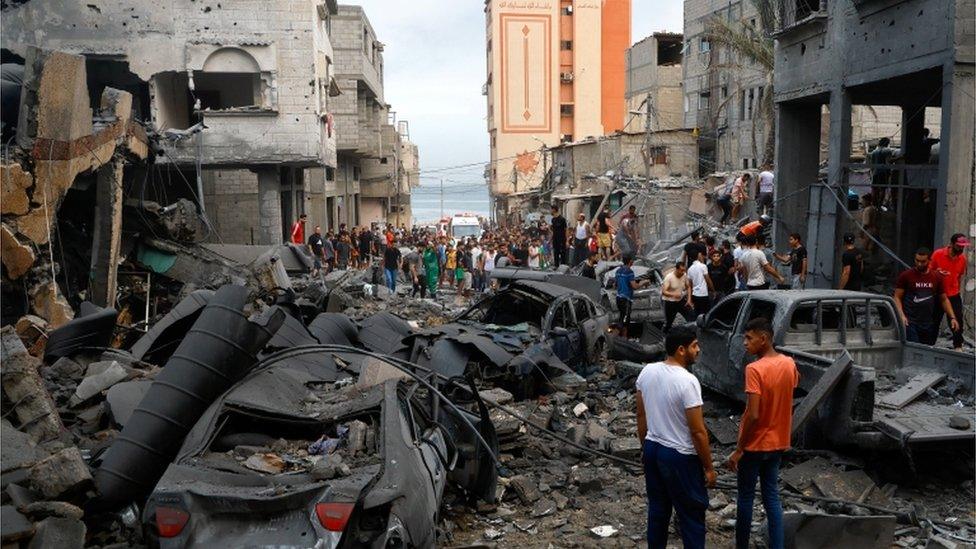
Israel responded to recent attacks with air strikes on Gaza
The Gaza Strip is a 41km (25-mile) long and 10km-wide territory between Israel, Egypt and the Mediterranean Sea.
About 2.3 million people live there and it's ruled by a Palestinian armed group called Hamas, which has fought Israel many times.
Israel controls the air space over Gaza and its shoreline and restricts who and what goods are allowed in and out. Similarly, Egypt controls who passes in and out through its boundary with Gaza.
There is a barrier between Israel and Gaza and along the border with Egypt. Even before this latest fighting it was hard for people to go in and out.
After the Hamas attacks of 7 October, Israel cut off the supply of water and electricity, food and medical supplies to the area.
Aid agencies say they are worried about the safety of civilians in Gaza as a result of both the Israeli restrictions, and Israeli military attacks. Israel says that Hamas is responsible for the situation in Gaza, as a result of Hamas' actions in attacking Israel.
Before the latest war about 80% of the population of Gaza depended on international aid, according to the UN, and about one million people rely on daily food aid.
Can people leave Gaza?
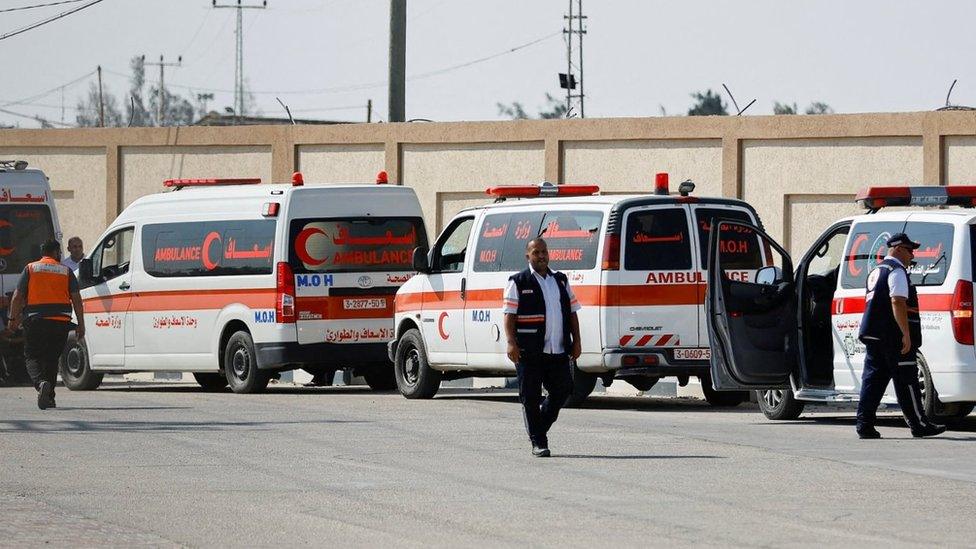
Ambulances carrying badly injured people from Gaza were allowed into Egypt on 1 November
Getting out of Gaza had been almost "impossible", in the first few weeks after Hamas attacked Israel on 7 October, BBC Analysis Editor Ros Atkins said.
That was because the crossing between Israel and Gaza was closed.
People couldn't leave by boat either because Israel's navy controls the shoreline.
Large crowds gathered at the Rafah border crossing between Gaza and Egypt in the hope they might be allowed to cross into Egypt one day.
On 1 November the Rafah border crossing in southern Gaza was opened for the first time since the most recent conflict began in October.
It meant ambulances were able to take a number of injured people from Gaza to Egypt for treatment.
What is Hamas?
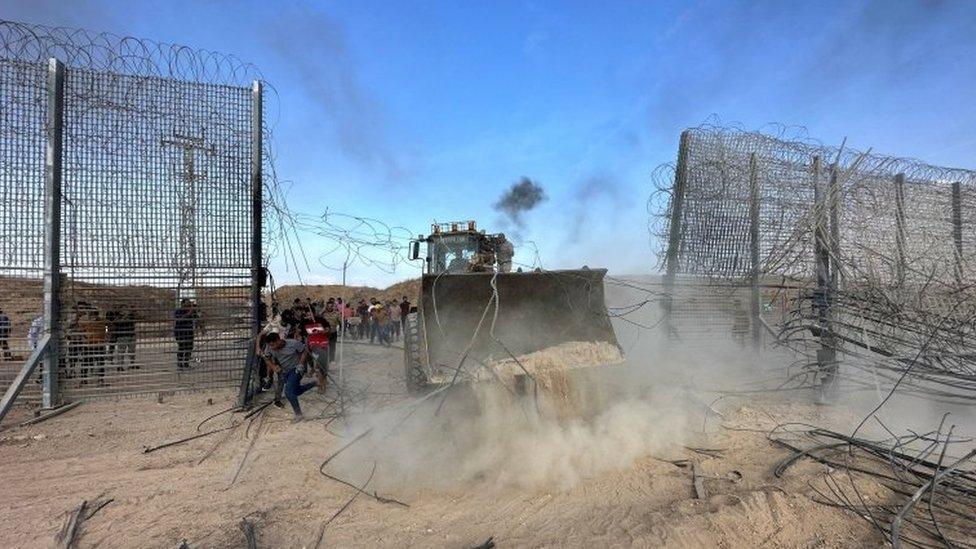
Some Hamas fighters entered Israel through holes in a fence put up by Israel
Hamas is a Palestinian Islamist armed group which has ruled the Gaza Strip since 2007.
The UK government has made Hamas a "proscribed terrorist group".
This means that the UK Home Secretary, the politician in charge of police and security, has ruled that Hamas has used violence to try to advance their cause.
The current fighting follows years of tensions between Hamas and Israeli governments.
In response to the attacks, Israel's prime minister posted a video statement saying "we are at war" and the Israeli military said it has begun bombing targets in the Gaza strip in response "to the barrages of rockets".
Hamas' military commander Mohammed Deif called on Palestinians everywhere to join the group's operation.
Israel's Prime Minister Benjamin Netanyahu told Israelis they are going into a "long and difficult war".
- Published19 October 2023

